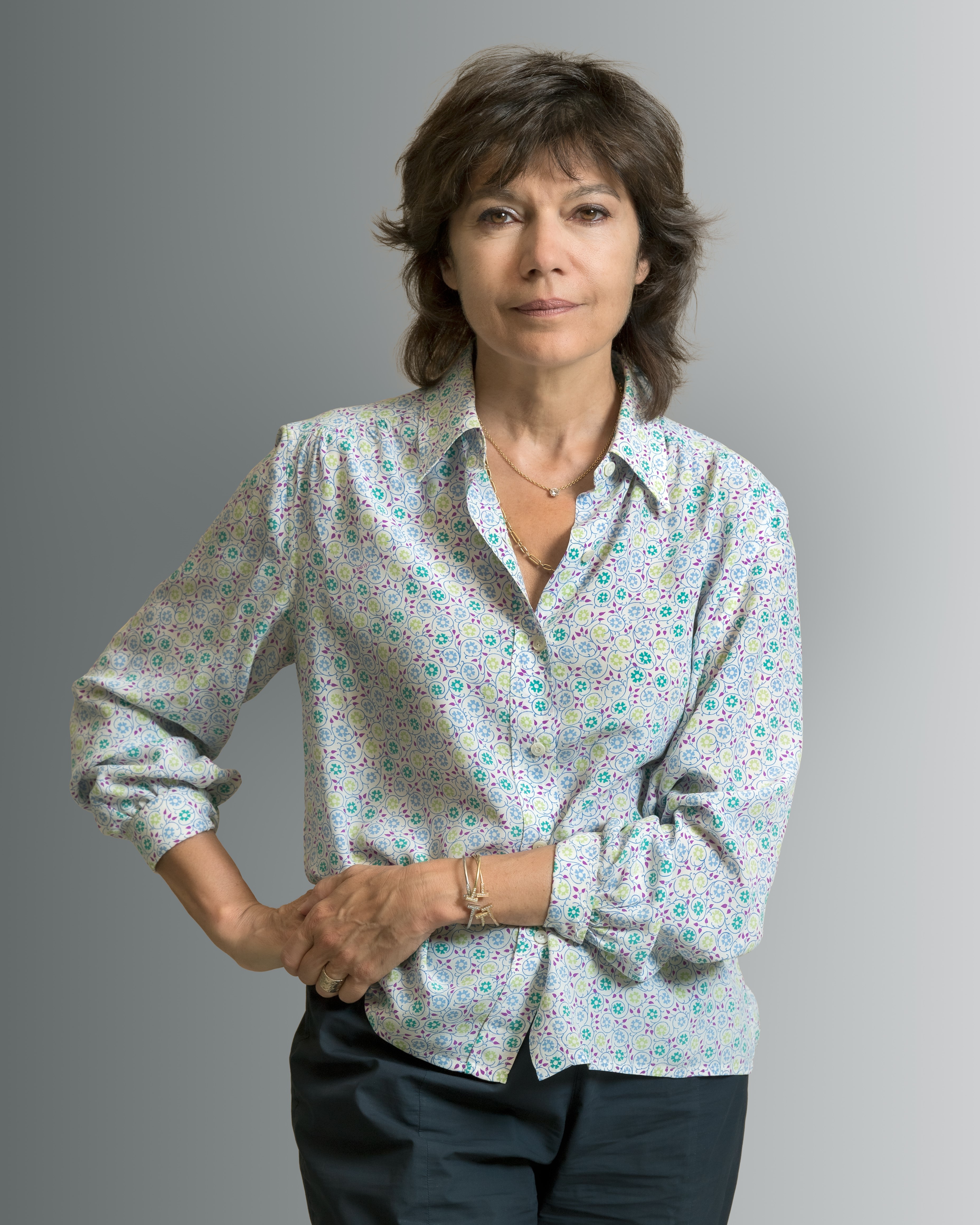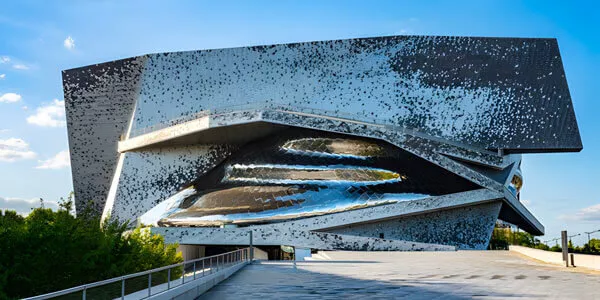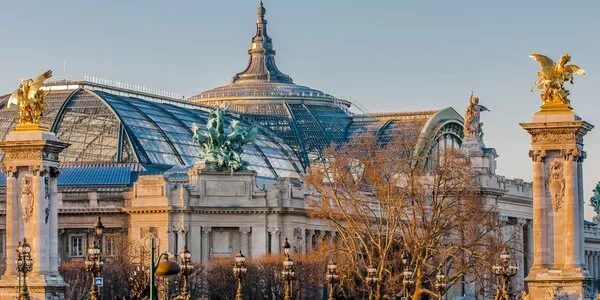
Geopolitics of the art world - Chapter 2 : Contemporary Art and the "Global South"
First and foremost, let's be cautious with terminology. While we can speak of a Western world, the "global south" does not exist as such, and this notion encompasses highly heterogeneous realities. Moreover, it includes countries that vehemently reject being assimilated into the "south."

Nathalie Obadia
Gallery owner specializing in contemporary art, with galleries in Paris and Brussels. She is also the author of the landmark book "Geopolitics of Contemporary Art" and teaches at Sciences-Po Paris.
© Luc Castel
China: From International Opening in the 1980s to Recentralization in the 2000s
With the exception of a few commercial outposts, China was not colonized by colonial powers and is now striving to differentiate itself from the West. The country encourages its artists to produce contemporary art inspired by ancient traditions, through calligraphy and nature representation. For about thirty years, Chinese artists, particularly those working in the "pop" vein close to Western contemporary art, emerged. Their works were acquired by local and international collectors, yet there has always been a reluctance from official Chinese institutions to include them in public collections. Today, these art forms are increasingly marginalized, and the programming in China is closing in on itself. Public and private museums are encouraged to focus on traditional programming, further marginalizing Western artists. When these artists are admitted, it is often in the realm of abstraction, which easily passes through the censor's scrutiny. The new collectors are encouraged to buy locally, as it is becoming increasingly difficult to escape criticism or disapproval by displaying international artists on their property. China has a relatively strong local art market today and promotes artists who can adapt to censorship requirements. However, internationally, contemporary Chinese artists are less inclined to export their work and have seen a noticeable decline from the 1980s to the 2010s.
India: Between the Dynamism of the International Diaspora and Local Conservatism
India benefits from an international language, English, and a powerful diaspora that is very active in certain regions of the world, such as the Middle East, North America, or the United Kingdom. However, there remains a stark contrast between the country's significant demographic and economic weight and its limited influence in the field of contemporary art. At the center of the game, the current government is pursuing a national policy centered around a certain idea of "Indianness" (or "Hinduness" or "Hindutva"), opposing both Marxist-Leninist and capitalist influences, which explains the country's relative closedness to international contemporary art. Public museums are clearly underfunded, and no effort is made to support the Indian contemporary art scene. In this regard, the absence of Indian representation, except for two past editions, at the Venice Biennale is indicative of this lack of interest. This is a notable difference compared to China, which continues to support a certain visibility through its large pavilion at the Venice Arsenale. However, the influence of Indian diasporas, particularly in the United Kingdom and the United States, is very active in supporting local major museums, and they purchase and collect contemporary Indian art for themselves and the museums they support.
The Middle East: A New Platform for the "Global South"?
The art market in the Middle East is narrower but energized by major institutional projects such as the Louvre and the future Guggenheim Museum in Abu Dhabi, the Centre Pompidou AlUla in Saudi Arabia, and Sharjah in the United Arab Emirates. Through its biennial, Sharjah is emerging as a significant pivot of this "Global South," a confluence point for Africa, particularly East Africa, India, and South Asia. Led by Hoor Al-Qasimi, who studied arts in the United Kingdom and has a highly international profile, this biennial is committed to presenting "non-Western" art forms. This position as a "reference biennial of the south," previously held by Sao Paulo in Brazil, is possibly shifting to Sharjah.
Africa: National Locomotives Not Yet at Destination Regarding
Africa, we can now make an initial assessment, which begins with the observation of the fragmentation and diversity of situations across the continent's 54 states. Senegal, once seen as a pioneer of modernity in West Africa, is now returning to a celebration of traditions. In this very particular context, questions arise about the future of the Senegalese art scene, whose remarkable Dakar Biennale, long a standard-bearer of a certain progressivism on the continent, had to be canceled in 2024 due to lack of funding. Nigeria, immense in population and benefiting from a dynamic international diaspora, suffers from endemic problems that prevent the emergence of a true artistic ecosystem. In South Africa, Cape Town certainly benefits from the Zeiss Museum of Contemporary Art, and some national artists have gained global recognition, but overall, the country must manage other political, economic, and social priorities. Efforts to establish "hubs" of African Art, through large international trade fairs, such as the 1-54 Contemporary African Art Fair, initially based in London before moving to Marrakech, have garnered significant enthusiasm. However, the initial enthusiasm has somewhat faded since then.
Latin America: Giving Voice to Indigenous Practices
Latin America is currently in the spotlight, with the sixtieth edition of the Venice Biennale, whose artistic director is the Brazilian Adriano Pedrosa. His project for the Biennale, quite radical, is to give voice to indigenous peoples and other "forgotten" artists of the Global South, who are widely represented for this edition. The exhibition features 20th-century artists, mostly unknown to the general public, some of whom embody a local appropriation of modernist trends, and others express more ancestral forms of artistic expression, which sometimes touch on the realm of craftsmanship. This is certainly fascinating, but the priority given to "outsiders" seems to have the consequence that major artists, such as Beatriz Milhazes or Tunga, are absent from the central exhibition. These omissions are probably explained by the fact that these artists have already found their place in the international art market, as early as the 1980s and 90s. Evidently, Pedrosa's project is to prioritize creators who have remained in the shadows until now, starting with indigenous peoples. These are primarily the voices that we hear rising in the spaces of the 2024 Biennale.
FIND OUR OTHER ARTICLE:
DISCLAIMER:
Societe Generale Private Banking is Societe Generale Group’s business operating through its head office at Societe Generale SA, as well as departments, branches and subsidiaries located in the areas referred to below, under the Societe Generale Private Banking brand, and is the distributor of this document.
This video/audio content constitutes an advertising medium and holds no contractual value. It is not intended to provide an investment service. In addition, it does not constitute investment advice or a personalised recommendation on a financial product, or advice or a personalised recommendation on insurance, or any form of canvassing, or legal, tax or accounting advice from any Societe Generale Private Banking entity whatsoever.
The information contained in this document may be amended without prior notice, and is for illustrative purposes only to provide the reader with information that may be of use in making decisions. Any information on past performance, even repeated performance, does not under any circumstances guarantee future performance.
The private bankers of the Societe Generale Private Banking entities can provide potential investors with more detailed information on the offerings, within their Societe Generale Private Banking entity, in the theme presented in this video/audio content.
This video/audio content is confidential and intended solely for the viewer/listener. It may not be made public or disclosed to any third party, nor reproduced in whole or in part without the prior written agreement of the Societe Generale Private Banking entity concerned.
Under no circumstances shall any Societe Generale Private Banking entity be held liable for any decision made by an investor on the sole basis of the information contained in this video/audio content.
Societe Generale Group maintains an operational administrative organisation taking all necessary measures to identify, verify and manage conflicts of interest. To that end, the entities of Societe Generale Private Banking have established a conflicts of interest management policy aimed at managing and preventing conflicts of interest. For more details, clients of Societe Generale Private Banking may refer to the conflicts of interest management policy available on request from their private banker.
Societe Generale Private Banking have also established a policy to address any complaints filed by its clients. Clients may request this policy from their private banker or on the institutional website of Societe Generale Private Banking (www.privatebanking.societegenerale.com).




